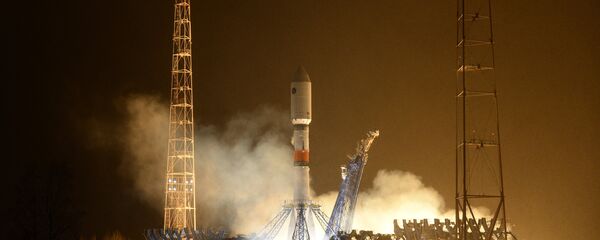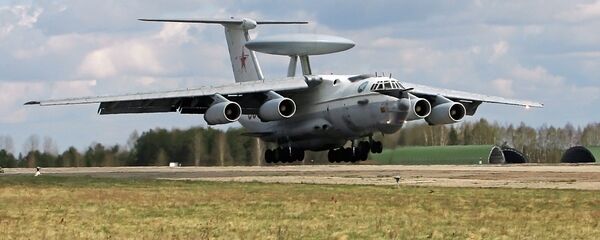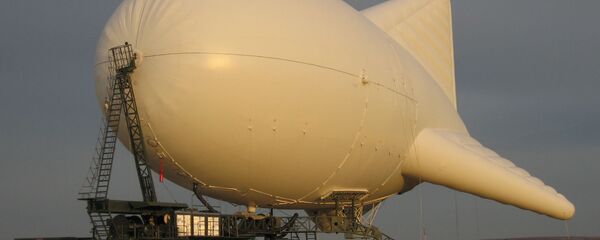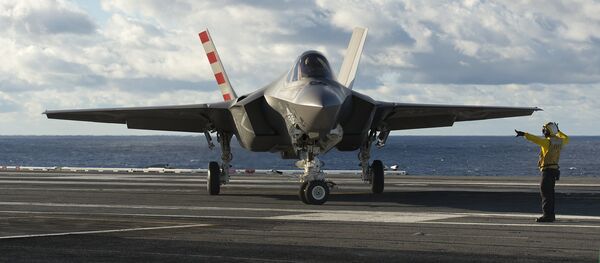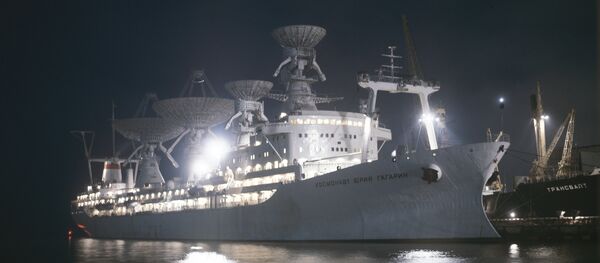On Thursday, Kommersant newspaper provided a few details about a new orbital surveillance system being developed for the Russian Ministry of Defense. The new system, consisting of three brand new Razdan-class satellites, is set to be lifted into orbit between 2019 and 2024 from the Plesetsk Cosmodrome. The system will complement and eventually replace the Persona-class optical-electronic satellites presently used by the military. The new satellite is being developed by the TsSKB-Progress research and production center.
Much more is known about Razdan's predecessor, the 14F137 Persona. Between 2008 and 2015, the Russian military launched three Persona-class surveillance satellites. The first was lost in 2008 due to a technical fault. The second and third devices (launched in June 2013 and June 2015, respectively) remain in perfect working order, and rumor has it that they are being actively used in Russia's anti-terrorist operation in Syria.
The satellites are charged with providing the Russian General Staff with highly detailed operational imagery. Moreover, the military's need for operational intelligence in Syria has proven so great that the military has turned to using civilian satellites of the Resurs and Kanopus class.
Prior to the late 2000s and the launch of the Persona, the Russian military was forced in large part to rely on obsolete Soviet-designed satellites with a short lifespan and a primitive, capsule-based method of capturing imagery. During this period, the military was effectively left without the capability for real-time operational monitoring in combat situations.
Viktor Murakhovsky, retired army colonel and member of the expert council of the Russian Military-Industrial Commission, began by admitting that "as far as optical-electronic intelligence is concerned, we have fallen far behind the Americans."
"In the US," Murakhovsky noted, "military satellites are the charge of the National Intelligence Agency (NIA). This organization has a separate budget, whose size is equivalent to about one third of the entire Russian military budget. This should give you an indication of the scale of the US approach."
"If we subtract the Space-Based Infrared System (SBIRS) satellites, designed for early warning detection of ballistic missile launches, military communications satellites and electronic intelligence satellites, what's left are the satellites used for optical-electronic reconnaissance."
According to the defense analyst, "the Americans have achieved outstanding results in the creation of such satellites –both in their design and in the creation of high-resolution digital matrices (matrices with a resolution of 36 megapixels are considered obsolete), as well as in the field of optics, and the synthesis of so-called multispectral imaging. Our military satellites aren't even close to matching these indicators, and this is something we must admit."
The expert explained that the US's multispectral capabilities, which allow them to operate in optical range (using visible light) as well as in infrared and ultraviolet mode, allow the satellites to see through clouds, rain, fog, and other adverse weather conditions. The complex, synthesized images emerging from multispectral imaging also allow military planners to identify military equipment located under trees, bushes, and those covered by camouflage netting. They even make it possible to identify some underground structures and facilities.
"We do not have precise data on the exact resolution of modern US satellites. But the images from space we have seen allow us to talk of a resolution of about 20-30 cm per pixel. A person can clearly be seen under this resolution. That was the result of US systems operating 7-8 years ago."
According to Murakhovsky, Russia's anti-terrorist operation in Syria would have been significantly easier to carry out if the country's armed forces had access to the kind of space surveillance equipment the US has.
At the same time, Murakhovsky said, Russia has great potential, since along with the US, it is the only other country with advanced optical-electronic capabilities. "China is now working on the creation of its own space reconnaissance grouping, but they do not have a real optical electronic capability yet," the analyst concluded.
For his part, Mikhail Alexandrov, a senior researcher at the Moscow State Institute of International Relations' Center for Military-Political Studies, suggested that in the field of optical-electronic satellites, Russia stands to benefit from the experience gained during the Soviet period.
"In Soviet times, we had an extensive network of optical-electronic reconnaissance satellites. They may have been inferior to their American counterparts in terms of some of their characteristics, but in principle they worked well," the analyst said.
At the same time, "space-based reconnaissance for the defense of one's own territory isn't necessary. For border areas, the intelligence gathered by military aviation, plus ground-based electronic intelligence, is enough. Furthermore, it's possible to launch aerostats to help 'see' through the territory of neighboring states to a decent depth."
"But far away regions are primarily the work of human intelligence, which warns us about dangerous concentrations of troops," Alexandrov noted. "Plus there are special reconnaissance ships monitoring the situation in relevant areas of the oceans."
"In other words," the analyst explained, "until now, we've had enough intelligence sources for the defense of our own territory. But now, as I understand it, more ambitious goals have been set before the Russian Armed Forces. Among them is participation in peacekeeping and anti-terrorist operations in various regions. Moreover, we are once again facing with a global confrontation with NATO. And this requires the effective tracking of US carrier groups stationed around the globe, preferably in real time."
"Factually, space intelligence satellites carry a global strategic importance, and provide nations with a significant advantage in this area. It's not enough to find the target; it's also necessary to be able to target it with your weapons (for example, by means of the Kalibr long-range cruise missiles). As a rule, such an attack must be applied quickly, and only satellites are capable of receiving the target's coordinates almost instantaneously."
Asked whether the three planned Razdan-class satellites will be enough for Russia's needs, Alexandrov suggested that "in combination with other intelligence tools, three satellites will be enough. Optical-electronic intelligence satellites are expensive of course, but not that expensive – they do not cost billions of dollars." In any case, "if the Defense Ministry required more, I'm confident that the funds necessary would be found."


